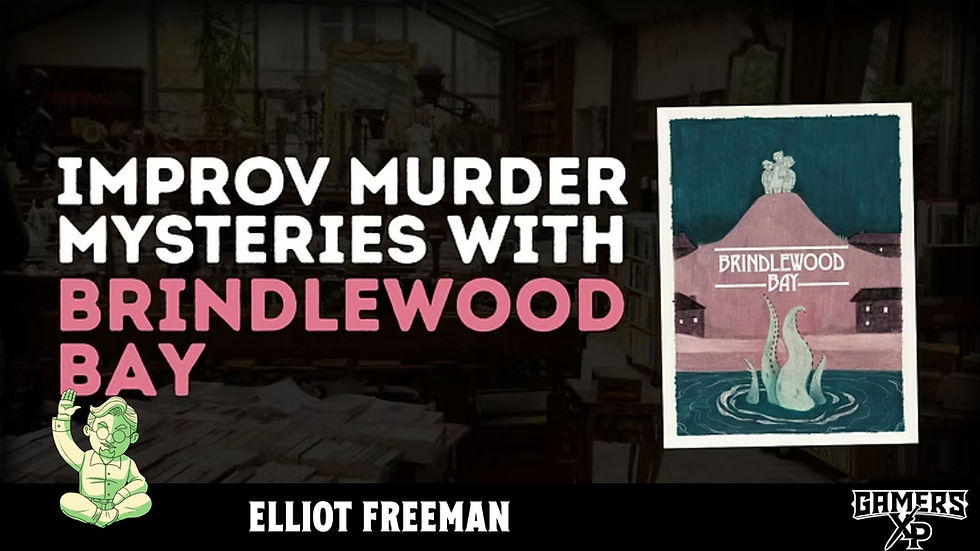Worldbuilding On the Fly: A Toolkit for GMs
- Kevin DeArman

- Jul 30
- 4 min read
Hello guys. My name is Kevin, and I have been a DM for a bunch of games. Today, I am presenting some tips and tricks for effective worldbuilding. There are many tools available in various materials on this subject. Most games produce tables and such to help with this process. I always like to encourage new DMs to get familiar with these tables and such, but when it comes to building an original idea, it's sometimes good to get your head out of the book.

Creating the Sandbox
Part this entire process will be figuring out what style of world you want to build. I favor building around my players backgrounds, so their personality and flaws usually have a heavy influence on what the world is like. For example, I have had campaigns where a player decided that their character would have a very strong negative feelings about elves...so when I designed my overworld, I chose an evil elven empire as sort of a big bad in the game. Most aspects of the greater world won't be immediately impacted by players at lower tiers of play, but setting the tone for where you might see players in the future will go a long way. At lower levels, starting with a focused town or village is a great starting point. Designing the town, points of interests in the surrounding area, and more importantly NPCs to fill that world can sometimes prove to be a challenge.
Making a Map
One of my favorite ways to make a map requires random rolls. I will find the largest grid I can, and then roll as many dice as I can over that area. The outline of this greater roll becomes coastline and islands. Large concentrations of numbers in the roll may determine topography and elevation. In the end, this process puts somewhat of an idea of how the world is going to look on a map. From there I will pencil in other types of terrain and waterways if needed. After that, I work out where the bounds of kingdoms or countries might be. Then I will look into individual settlements. Depending on the setting, all types of biomes might not make it into a finished project. 9 times out of 10, this process results in a very workable map that you can refine later. Another cool thing is that if you feel it will not work, you can always shoot for a better roll. Then, I will translate what I have come up with into something like Incarnate, or just try and free hand it.

Kingdoms
For long scale campaigns, this can either be very relevant, or not relevant at all. I love running games that have some sort of political backdrops in the mid-late tiers. Having established how kingdoms or country might function goes a long way towards trying to convey the general feeling of an area. A starting town far into the frontier of some great kingdom will have a vastly different feel to starting in a metropolis type area. Scale matters a lot, and having a plan for how you are going to introduce a kingdom's ideals and such will go a long way towards making your players feel connected at a table.
Towns and Cities
The first thing with this step is that I consider population. I prefer smaller towns in lower bands, and bigger places as players become higher level. I will lay out buildings, determine what the location has to offer, and then prepare some NPCs to fill the gaps. I am not very good at doing voices or things like that, but on almost all of my NPCs I take some time to work out who they are and what their background might be. This might help me determine what type of personality they may have, and how they might deal with the occasional odd adventurer showing up randomly. Most small towns that player would not be from may be slightly cold towards entities they don't know, while a larger city might be more apathetic. Rules and laws are a part of civilization, and many times the standard types of laws will apply. I like to occasionally toy with stranger laws or customs depending on the table I am running.
NPCs
I want my NPCs to have goals and feel alive to players. Those goals may align with what adventurers are doing, and sometimes they won't. Usually, it moves on a scale. I will determine species, and characteristics and other relevant bits of information. Names can be a more difficult thing. Many times, I will select somewhat random names. An important NPC might have a name that alludes to something or sounds cooler in my head. The type of NPC a player may encounter will depend heavily on the type of game being run.
The Random
I usually keep a few tricks tucked away for when player choices go a different way. Maybe they want to abandon the quest, and go explore. This is where I like to have a couple encounters planned just in case. Wilderness encounters are nice, or if it happens in a city maybe they run into more trouble then they expect. Having some things ready to go in case players don't stick to the main path will make your world feel alive and more 3 dimensional.







Super informative read. Looking forward to possibly starting to DM my first game (and decide not to last minute because I’m anxious)